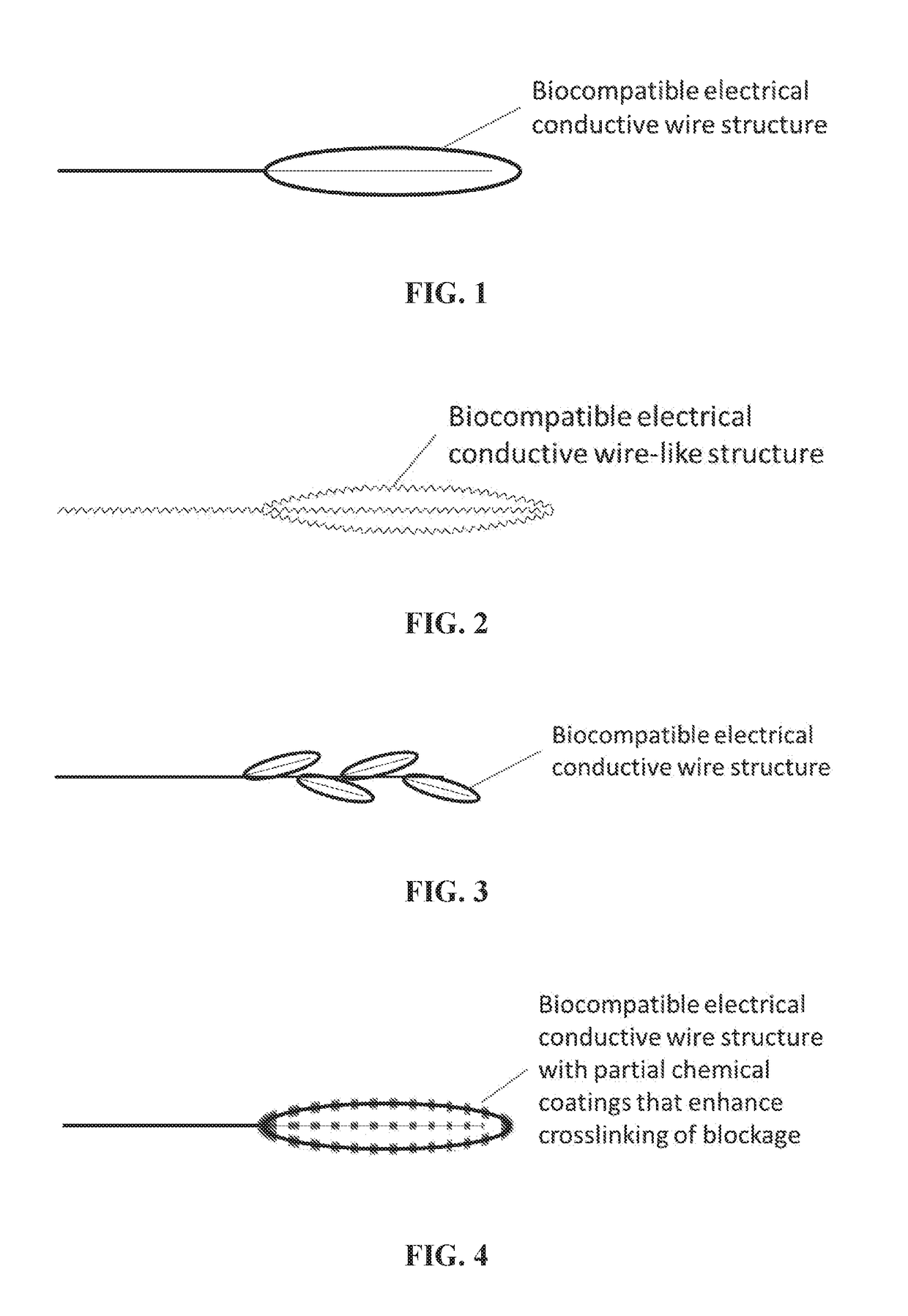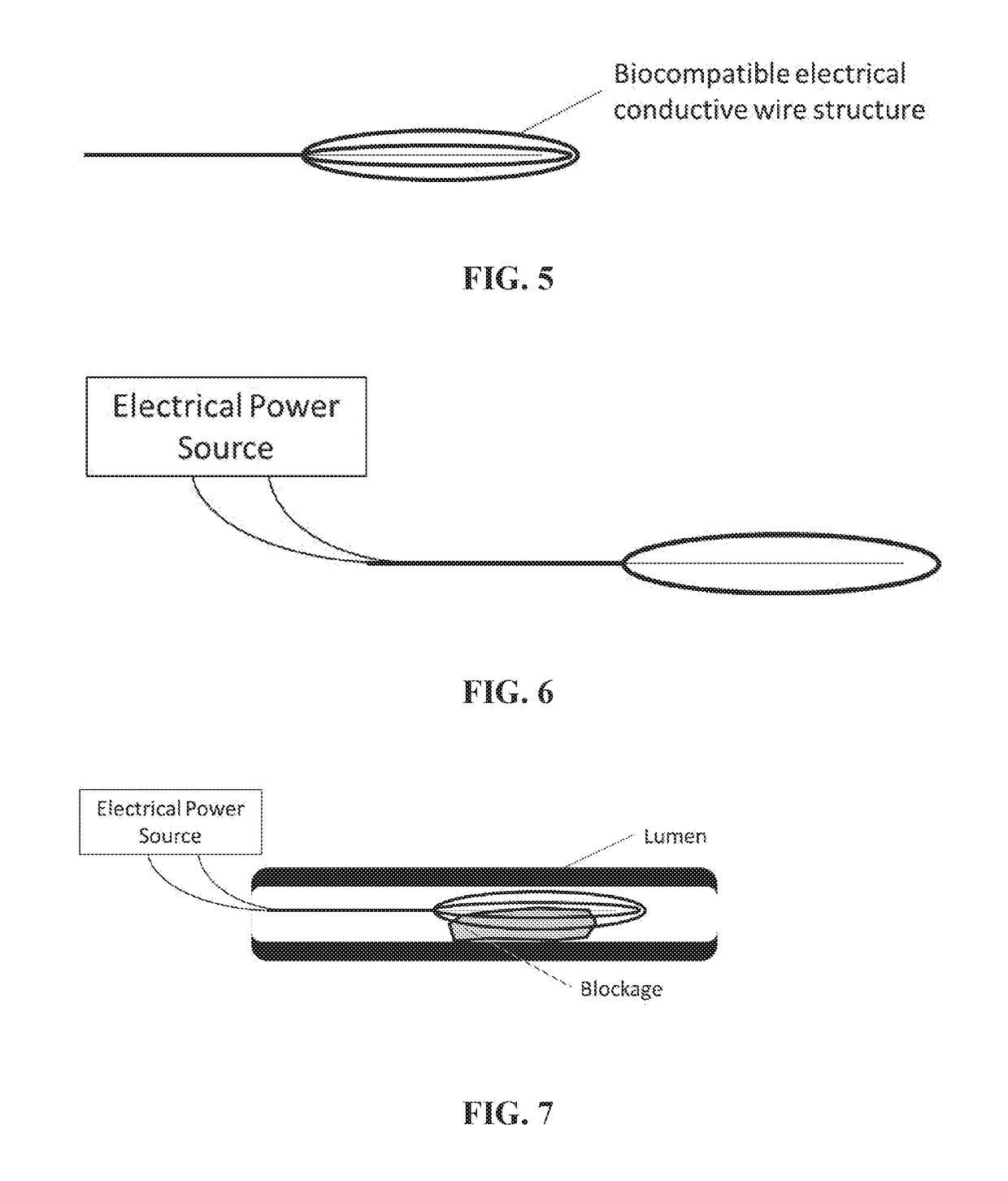Radio frequency electro-thrombectomy device
a radio frequency electrothrombus and thrombosis technology, applied in the field of radio frequency electrothrombus devices, can solve the problems of insufficient oxygen to cells, inability to carry out surgery, damage to the vessel wall, etc., and achieve the effects of minimizing the risk of vessel wall damage, enhancing the adhesion between the device and the device, and reducing the risk of thrombosis
- Summary
- Abstract
- Description
- Claims
- Application Information
AI Technical Summary
Benefits of technology
Problems solved by technology
Method used
Image
Examples
Embodiment Construction
[0023]The present invention provides a RF electro-thrombectomy device for removal of vascular lumen blockages with a low risk of vessel wall damage and blockage fragmentation due to the use of RF electric current to strengthen the blockage and the blockage-device interface prior to blockage removal. The blockage removal device of the present invention causes an electric current, such as RF or direct electric current, to pass through a blockage, which lumen blockage can be, but are not limited to, a thrombus, blood clot or embolus.
[0024]Embodiments of the RF electro-thrombectomy device are generally made of electrically conductive and optionally biocompatible, conducting wires, manipulation wire, and a structure that is designed to capture a vascular blockage, connected to an RF system. An RF system generates an RF electric current. A preferred embodiment of the RF electro-thrombectomy device comprises at least one biocompatible, manipulation wire and a structure. In some embodiments...
PUM
 Login to View More
Login to View More Abstract
Description
Claims
Application Information
 Login to View More
Login to View More - R&D
- Intellectual Property
- Life Sciences
- Materials
- Tech Scout
- Unparalleled Data Quality
- Higher Quality Content
- 60% Fewer Hallucinations
Browse by: Latest US Patents, China's latest patents, Technical Efficacy Thesaurus, Application Domain, Technology Topic, Popular Technical Reports.
© 2025 PatSnap. All rights reserved.Legal|Privacy policy|Modern Slavery Act Transparency Statement|Sitemap|About US| Contact US: help@patsnap.com



